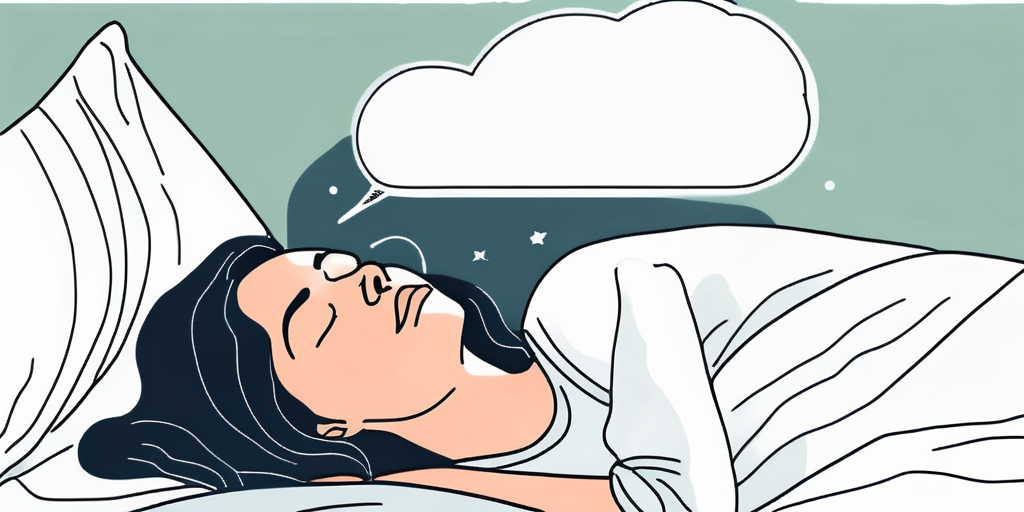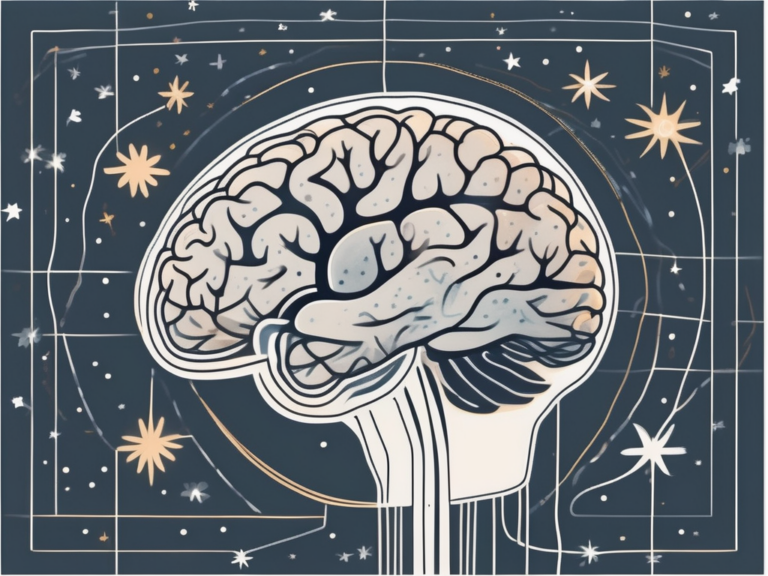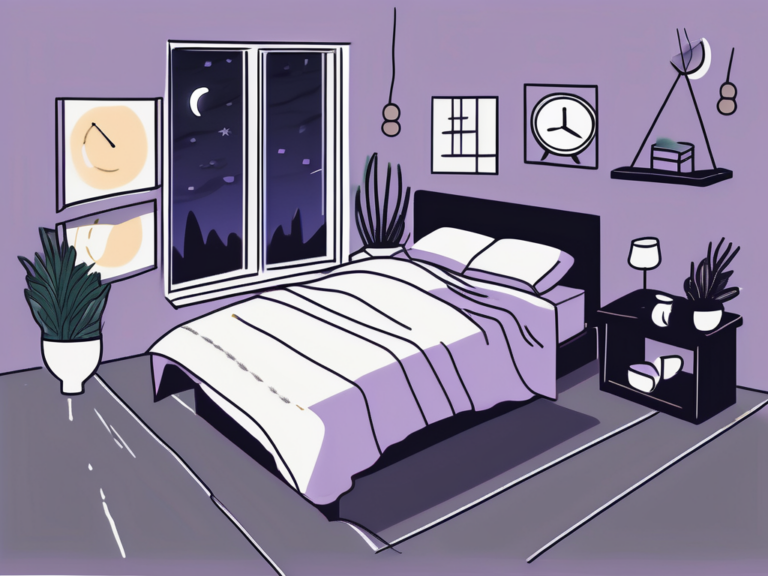can sleep apnea cause headaches
Sleep apnea is a prevalent sleep disorder that affects millions of people worldwide. While it is widely known for causing disruptions in breathing during sleep, many people may not be aware of its potential connection to headaches. In this article, we will explore the relationship between sleep apnea and headaches, the risks and complications it poses, the diagnosis and treatment options available, and strategies to manage and prevent sleep apnea-related headaches.
Understanding Sleep Apnea
Definition and Types of Sleep Apnea
Sleep apnea is a sleep disorder characterized by pauses in breathing or shallow breaths during sleep. These pauses can last for a few seconds to a few minutes and can occur multiple times throughout the night. As a result, the quality of sleep is significantly disrupted, leading to daytime fatigue and other health complications.

There are three main types of sleep apnea: obstructive sleep apnea (OSA), central sleep apnea (CSA), and complex sleep apnea syndrome (CSAS).
Obstructive sleep apnea (OSA) is the most common form, occurring when the throat muscles intermittently relax and block the airway, leading to breathing interruptions. This obstruction can be caused by various factors, such as excess weight, enlarged tonsils, or a narrow airway.
Central sleep apnea (CSA) is less common and results from the brain failing to send proper signals to the muscles that control breathing. Unlike OSA, there is no physical obstruction in the airway. Instead, the brain’s inability to regulate breathing during sleep causes pauses in breathing.
Complex sleep apnea syndrome (CSAS) is a combination of both obstructive and central sleep apnea. Individuals with CSAS experience the physical blockage of the airway as well as the brain’s failure to send appropriate signals to the breathing muscles.
Common Symptoms of Sleep Apnea
Individuals with sleep apnea often experience a variety of symptoms, which can significantly impact their daily lives. The most common symptom is loud snoring, which is caused by the vibration of the relaxed throat tissues during breathing interruptions. This snoring can be disruptive not only to the person with sleep apnea but also to their sleep partner.
In addition to snoring, excessive daytime sleepiness is another prevalent symptom. Due to the frequent interruptions in breathing during the night, individuals with sleep apnea are unable to achieve deep, restorative sleep. As a result, they may feel excessively tired during the day, struggle to concentrate, and experience morning headaches.
Furthermore, sleep apnea can also contribute to other health issues. The repeated drops in oxygen levels during breathing pauses can put a strain on the cardiovascular system, leading to high blood pressure and an increased risk of heart problems. Additionally, the disrupted sleep patterns can disrupt the body’s metabolism, potentially contributing to weight gain and obesity.
It is important to recognize the symptoms of sleep apnea and seek medical attention for proper diagnosis and treatment. With appropriate interventions, individuals with sleep apnea can improve their sleep quality, enhance their overall health, and regain their energy for a more fulfilling life.
The Link Between Sleep Apnea and Headaches
The Science Behind Sleep Apnea-Induced Headaches
Research suggests that there is a strong association between sleep apnea and headaches, particularly morning headaches. The exact mechanisms underlying this connection are not fully understood, but several factors may contribute to the development of headaches in sleep apnea patients.

One possible explanation is the decrease in oxygen levels and the subsequent increase in carbon dioxide levels during episodes of reduced or paused breathing in sleep apnea. This alteration in blood gas levels can trigger changes in blood vessels and lead to headaches.
Another contributing factor could be the frequent interruptions in sleep caused by sleep apnea, which disrupt the normal sleep cycle. Poor sleep quality and inadequate rest may make individuals more susceptible to headaches.
Frequency and Severity of Headaches in Sleep Apnea Patients
Studies have suggested that sleep apnea patients are more likely to experience headaches compared to individuals without the condition. Morning headaches, in particular, are reported by a significant number of individuals with sleep apnea.
The severity of headaches can vary among sleep apnea patients. Some may experience mild headaches, while others may endure more severe or debilitating ones. These headaches can be pulsating, throbbing, or feel like a tight band around the head.
It is important to note that the frequency and severity of headaches in sleep apnea patients can also be influenced by other factors such as age, gender, and overall health. For example, older individuals with sleep apnea may be more prone to experiencing frequent and intense headaches.
Furthermore, the duration and effectiveness of treatment for sleep apnea can also play a role in managing headaches. Continuous positive airway pressure (CPAP) therapy, a common treatment for sleep apnea, has been shown to improve headache symptoms in some patients. By ensuring a steady flow of oxygen during sleep, CPAP therapy helps to alleviate the oxygen deprivation that can contribute to headaches.
Overall, the relationship between sleep apnea and headaches is a complex one. While the exact mechanisms are not fully understood, it is clear that sleep apnea can have a significant impact on headache development and severity. Further research is needed to better understand this connection and develop targeted interventions to improve the quality of life for sleep apnea patients.
Potential Risks and Complications
Long-Term Effects of Sleep Apnea on Brain Health
Undiagnosed and untreated sleep apnea can have long-term detrimental effects on brain health. The repetitive drops in oxygen levels and the fragmented sleep patterns associated with sleep apnea can contribute to cognitive decline, memory problems, and an increased risk of developing neurodegenerative diseases, such as Alzheimer’s disease.
Let’s delve deeper into the impact of sleep apnea on brain health. The intermittent lack of oxygen during sleep can lead to a condition called hypoxia, which refers to a decrease in the supply of oxygen to the brain. This hypoxia can cause damage to brain cells, impairing their ability to function optimally. Over time, this can result in cognitive decline, affecting memory, attention, and overall cognitive performance.
Furthermore, the fragmented sleep patterns caused by sleep apnea can disrupt the brain’s ability to consolidate memories. During sleep, the brain processes and stores information gathered throughout the day. However, with sleep apnea, the constant interruptions prevent the brain from completing this crucial memory consolidation process, leading to difficulties in retaining and recalling information.
Other Health Risks Associated with Sleep Apnea
Sleep apnea is not just a sleep disorder; it is a condition with far-reaching implications for overall health. If left untreated, it can contribute to a higher risk of cardiovascular diseases, including heart attacks, strokes, and high blood pressure. Moreover, untreated sleep apnea can negatively impact metabolic health, leading to weight gain, insulin resistance, and an increased risk of developing type 2 diabetes.
Let’s explore the connection between sleep apnea and cardiovascular health. The repeated drops in oxygen levels during sleep apnea episodes can put a significant strain on the heart. This strain can lead to the development or worsening of cardiovascular conditions, such as coronary artery disease. Additionally, the fragmented sleep caused by sleep apnea can disrupt the body’s natural regulation of blood pressure, potentially leading to hypertension, a major risk factor for heart attacks and strokes.
Furthermore, sleep apnea’s impact on metabolic health is worth noting. The disrupted sleep patterns and oxygen deprivation associated with sleep apnea can disrupt the body’s hormonal balance, affecting the regulation of appetite and metabolism. As a result, individuals with untreated sleep apnea may experience weight gain, particularly in the abdominal region. This excess weight can contribute to the development of insulin resistance, a precursor to type 2 diabetes.
Diagnosis and Treatment of Sleep Apnea
Diagnostic Tests for Sleep Apnea
Diagnosing sleep apnea typically involves a comprehensive evaluation of the patient’s medical history, a physical examination, and various sleep tests. Polysomnography, often conducted in a sleep laboratory, is considered the gold standard for diagnosing sleep apnea. This test monitors multiple physiological parameters during sleep, such as brain activity, eye movements, muscle activity, and respiratory patterns.
In addition to polysomnography, other diagnostic tests, like home sleep apnea tests, may be used for certain individuals based on their specific needs or circumstances.
During a polysomnography test, electrodes are placed on the patient’s scalp, face, chest, and legs to monitor brain waves, eye movements, heart rate, and muscle activity. Additionally, belts are placed around the chest and abdomen to measure breathing effort, and a pulse oximeter is attached to the finger to monitor oxygen levels in the blood. This comprehensive evaluation allows healthcare professionals to accurately diagnose sleep apnea and determine its severity.
Home sleep apnea tests, on the other hand, are portable devices that patients can use in the comfort of their own homes. These tests typically involve wearing a small device that measures breathing patterns, oxygen levels, and heart rate during sleep. While they may not provide as much detailed information as polysomnography, home sleep apnea tests can be a convenient and cost-effective alternative for certain individuals.
Treatment Options for Sleep Apnea
The treatment of sleep apnea aims to alleviate symptoms, improve sleep quality, and mitigate the associated health risks. The choice of treatment depends on the type and severity of sleep apnea and may involve lifestyle changes, medical interventions, or a combination of both.
Lifestyle modifications may include weight loss, regular exercise, avoiding alcohol and sedatives, maintaining a regular sleep schedule, and sleeping in a side position rather than on the back. These changes can help reduce the severity of sleep apnea and improve overall sleep quality.
Medical treatments for sleep apnea include continuous positive airway pressure (CPAP), which involves wearing a mask over the nose or mouth during sleep to deliver a steady stream of air pressure to keep the airway open. This treatment is highly effective and is considered the first-line therapy for moderate to severe sleep apnea. Other treatment options include oral appliances, which help keep the airways open by repositioning the jaw or tongue, and in some cases, surgical interventions may be recommended to remove excess tissue or correct structural abnormalities.
It is important to note that the choice of treatment should be tailored to each individual’s specific needs and preferences. A multidisciplinary approach involving sleep specialists, dentists, and surgeons may be necessary to develop a comprehensive treatment plan that addresses the unique circumstances of each patient.
Managing Headaches in Sleep Apnea Patients
Lifestyle Changes to Reduce Headaches
For sleep apnea patients experiencing headaches, certain lifestyle changes may help reduce their frequency and severity. Maintaining a regular sleep schedule, creating a relaxing bedtime routine, managing stress levels, and avoiding triggers such as caffeine or certain foods can have a positive impact on headache management.
Engaging in regular physical activity and practicing relaxation techniques like deep breathing exercises or meditation may also alleviate headaches in some individuals.
It is important to note that while lifestyle changes can be beneficial, they may not completely eliminate headaches for all sleep apnea patients. Each individual’s response to these modifications may vary, and it is recommended to consult with a healthcare professional for personalized advice.
Medical Treatments for Headache Relief
If lifestyle modifications prove insufficient in managing headaches, it is essential to consult with a healthcare professional. They may recommend appropriate analgesics or migraine-specific medications to relieve headache symptoms. However, it is crucial to address the underlying sleep apnea condition to effectively manage these headaches in the long term.
In addition to medication, other medical treatments may be considered depending on the severity and underlying causes of the headaches. Continuous positive airway pressure (CPAP) therapy, a common treatment for sleep apnea, has been found to improve headache symptoms in some patients. This therapy involves wearing a mask over the nose or mouth during sleep, which delivers a steady stream of air to keep the airways open.
In more severe cases, surgical interventions may be necessary to address the root causes of both sleep apnea and headaches. Procedures such as uvulopalatopharyngoplasty (UPPP) or maxillomandibular advancement (MMA) can help alleviate airway obstructions and improve sleep quality, leading to a reduction in headaches.
It is important to remember that medical treatments should always be discussed and pursued under the guidance of a healthcare professional. They will be able to assess the individual’s specific condition and recommend the most appropriate course of action.
Prevention and Coping Strategies
Preventive Measures for Sleep Apnea
While not all cases of sleep apnea can be prevented, certain measures may reduce the risk or severity of the condition. Maintaining a healthy weight is crucial as excess weight can contribute to the narrowing of the airways, making it more difficult to breathe during sleep. Practicing good sleep hygiene, such as sticking to a regular sleep schedule and creating a relaxing bedtime routine, can also help promote better sleep and reduce the likelihood of sleep apnea episodes.

Furthermore, avoiding smoking and alcohol consumption is essential as both substances can relax the muscles in the throat, leading to increased airway collapse and worsening of sleep apnea symptoms. Managing allergies or nasal congestion through the use of nasal sprays or antihistamines can also be beneficial in reducing the risk of sleep apnea.
Moreover, seeking treatment for underlying medical conditions that can contribute to sleep apnea, such as nasal septum deviation or hypothyroidism, is crucial. Addressing these conditions can help improve the overall function of the respiratory system and reduce the likelihood of sleep apnea development.
Coping Strategies for Sleep Apnea and Associated Headaches
Dealing with sleep apnea and its associated headaches can be challenging, but there are coping strategies that can help individuals manage their condition effectively. Education and support from healthcare professionals play a vital role in empowering individuals to take control of their sleep apnea. Understanding the causes, symptoms, and treatment options can provide individuals with the knowledge they need to make informed decisions about their health.
Seeking emotional support from loved ones can also be incredibly beneficial. Having a strong support system can provide individuals with the encouragement and understanding they need to navigate the challenges of living with sleep apnea. Additionally, participating in support groups can connect individuals with others who are facing similar experiences, providing a sense of community and shared knowledge.
Furthermore, prioritizing self-care is essential in managing sleep apnea and associated headaches. Engaging in activities that promote relaxation and stress reduction, such as practicing mindfulness meditation or engaging in gentle exercise, can help improve overall well-being. Creating a comfortable sleep environment, with a supportive mattress and pillows, can also contribute to better sleep quality and reduce the impact of headaches.
Moreover, maintaining a positive mindset is crucial in managing sleep apnea. Focusing on the progress made and celebrating small victories can help individuals stay motivated on their journey towards better sleep. It is important to remember that managing sleep apnea is a process, and setbacks may occur. However, with perseverance and a positive outlook, individuals can overcome these challenges and continue to make improvements.
In conclusion, sleep apnea can indeed cause headaches, and understanding this connection is essential for effective management. By recognizing the symptoms, seeking timely diagnosis, and pursuing appropriate treatment, individuals can experience improved sleep quality, reduced headaches, and better overall health. Through a combination of lifestyle changes, medical interventions, and coping strategies, sleep apnea-related headaches can be minimized, allowing individuals to embrace restful nights and fulfilling days.






